Search Results
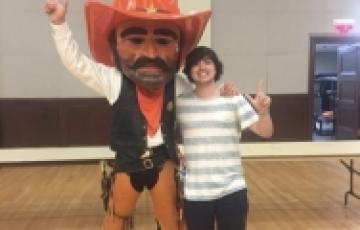
Camdon
My name is Camdon Cherry. I was 14 hours away from graduating with a BS in microbiology from Oklahoma State University when I was diagnosed with acute lymphblastic leukemia (ALL).
I presented to the hospital with staphylococcus infections in my blood and developed COVID-19 while in the hospital so my treatment was delayed for weeks. I am still very early in my treatments as I was only diagnosed on Dec. 1, 2020 and I am currently in induction phase 2 of chemotherapy.

Nicole
Just two weeks into my junior year of high school, I was pulled out of class at lunch and packed a small overnight bag, not realizing I wouldn’t return to school for the entire year.
My name is Nicole, and in 2022, I celebrated the 10-year anniversary of that life-altering day.

Avery
I am writing as a parent of a cancer survivor. My daughter, Avery Smith, who is now 8 years old, was diagnosed at age 3½ with leukemia. In 2016, our then 3-year-old daughter Avery was complaining of muscle aches, backaches, and for a solid week was running a pretty high fever. We took her to the doctor, and after a few visits, they weren’t really sure what was going on. After some bloodwork, our pediatrician called us and said Avery had some very concerning numbers.
Clinical Trials
When it comes to finding the right treatment for your child's cancer, a clinical trial may be an option. Your child will have access to new or improved therapies under study and not yet on the market. Discuss with your child's doctor the possibility of participating in a clinical trial, where treatment is administered in a safe, closely monitored environment.
Click here to read more about clinical trials.
Signs and Symptoms
Many people are diagnosed with CLL even though they do not have any symptoms. The disease may be suspected because of abnormal results from blood tests that were ordered either as part of an annual physical or a medical examination for an unrelated condition. An unexplained elevated white blood cell (lymphocyte) count is the most common finding that leads a doctor to consider a CLL diagnosis.
Generally, CLL symptoms develop over time. As the disease progresses, a person may experience
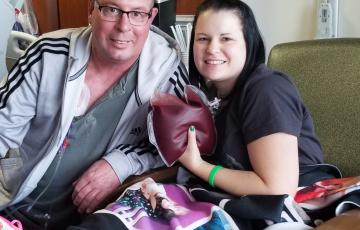
Don
In January of 2016, my dad was diagnosed with stage 4 non-Hodgkin lymphoma (NHL). He was unresponsive to treatment. He went into remission, but it quickly came back. The clinic said they couldn’t do anything more, so he was referred to the University of Minnesota for a clinical trial. The treatment included me, as his daughter, donating my T-cells. The clinical trial was helpful but didn’t get the results he needed, and cancer came back.
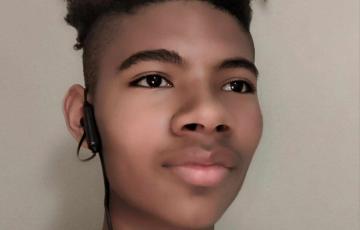
Dallas
Leukemia, as many of you know, is a cancer. It damages your body to the point where you are so comfortable with death and dying that it becomes an afterthought because in your mind you’ve already died. You see so many of your friends pass away at such a young age that it is devastating to the point where you become extremely emotionally advanced or numb. The resemblance that trauma has with a double-edged sword is that you either skyrocket or hit rock bottom.
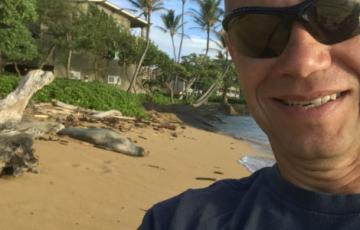
Jerome
Most importantly, the doctors, nurses, and researchers are true angles; wouldn’t be here without them. Dedicating their lives to saving others’, I am forever thankful. Not to mention the secretaries, volunteers, and administrators who are the lubrication to the operation, thank God.
It has been a while, but here’s the summary: Diagnosed with ALL in Oct. of 1986, remission shortly after in Dec. of 1986, then 2.5 years of chemotherapy and a few weeks of radiation therapy. It all changed my life... for the better.
Natalie
I was diagnosed with acute myeloid leukemia (with a FLT3 mutation), at age 46, on April 24, 2018. I had no idea I was as sick as I was until I was in the ER in Tampa, Florida and told my body was 94% full of leukemia. I needed to start chemo immediately.
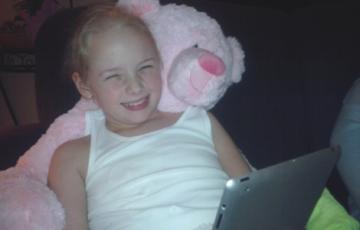
Kayleen
On March 8, 2012, our world changed forever.
I was at work when I got the call from my husband that I was to meet him and Kayleen at Children’s Hospital in Minneapolis. He said they found markers for leukemia in her blood work after testing for mononucleosis. Our oncologist was optimistic saying it was still “highly curable.”
Treatment
It's important that your doctor is experienced in treating patients with acute myeloid leukemia (AML) or has access to an AML specialist.
Types of AML TreatmentDoctors use several types of treatment for adults with AML, some at different stages. Click on the links below to read more about each type of treatment.
Treatment Outcomes
Treatment outcomes for people with CLL vary widely, and expected outcomes are influenced by the
- Stage of the disease
- Presence or lack of various factors associated with higher-risk disease
- Overall health of the patient
- Other considerations.
Current research suggests that newer treatment combinations and approaches may improve the length of survival. People with CLL should consult with their doctors to discuss individual potential outcomes. For survival statistics, click here.

Ashley
Three little words changed my life forever!
Krista
Where do I begin? I am a 2x acute myeloid leukemia (AML) survivor with being diagnosed for the first time in 2008 at the age of 38. My family and I received amazing support through The Leukemia and Lymphoma Society (LLS) both emotionally and financially with the co-pay program, webinars, and information guides.

Greg
In 2017, our world turned upside down when my father, Greg, was diagnosed with acute myeloid leukemia (AML). The only chance to save his life was a bone marrow transplant. Both of my uncles were tested, but neither was a match. Praying for a match, my father was placed on the donor match list.
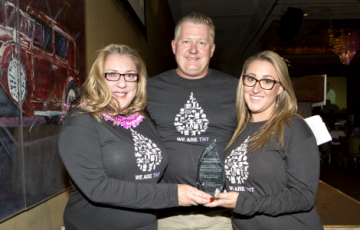
Chris
When I started this journey six years ago, I never would have imagined I would take part in TEN Team In Training events, but losing a great friend can motivate you to do incredible things.

Donna
I would first and foremost like to introduce you to a most special lady. My Nana.

Lauren
At the age of 33, I was diagnosed with acute myeloid leukemia (AML). I immediately started undergoing treatment which initially consisted of intense induction chemotherapy followed by consolidation chemotherapy and then a haploidentical stem cell transplant. My 64-year-old father was my only donor option as I did not have any matches on the national registry. My two sisters were less than half matches, and my mother’s history of having had a stem cell transplant herself precluded her from donating.
Jessica
Hi my name is Jessica and I am 21 years old. Two weeks before my 12th birthday I was diagnosed with acute myeloid leukemia (AML) which would completely alter the entire of my life moving forward. Due to the complexity and aggressiveness of my treatment, I was always receiving my treatment inpatient. My chemo regimen caused me to become severely tired and weak each round taking weeks for me to bounce back for the next round.

Eric
I was diagnosed with children’s B-type acute lymphoblastic leukemia (ALL) with a T 411 transmutation. As an adult, it’s rare for me to have children’s leukemia, but it’s the transmutation that makes mine unique. The doctors here have only seen this type three times in 34 years, and I was their third. I had unique symptoms as well. I had numb chin syndrome (NCS) where my bottom chin was so numb that I couldn’t speak or barely eat. I was given a bone marrow transplant on December 31, 2020.

Geoffrey
It all started with a limp. Then we began to notice random bruises on his arms and legs. Ten days before his 5th birthday, he had a fever that just wouldn’t go away. We went to see our family doctor, and after doing bloodwork, they said we needed to get to Children’s Hospital immediately. He was diagnosed with acute lymphocytic leukemia (ALL), and this began the start of a journey that we never imagined we would be on.

Lewis
Lew developed leukemia from being in a building at Ground Zero on 9/11. He returned there every day afterward for over a year, breathing in the carcinogenic ash which compromised his immune system. He is currently in the World Trade Center Health Program.
In 2012, he was diagnosed with acute myelogenous leukemia (AML) and was told he’d have a year to live. But as he likes to say, he is like a Timex watch that takes a lickin’ and keeps on tickin’.
As a result of two bone marrow transplants in 2014, he developed graft versus host disease (GVHD).
Tessa
Tessa surprised our family when she came rockin' an extra chromosome. She spent 11 days in the NICU and left with oxygen but seemed in good health otherwise. When Tessa turned 18 months old, she became very sick. She had multiple infections that wouldn't go away, became lethargic, and wasn't her cheerful self anymore. After a blood test, her pediatrician suspected leukemia. More tests confirmed Tessa had acute lymphoblastic leukemia (ALL). She went through chemotherapy for two and a half years and finished treatment in May 2020.
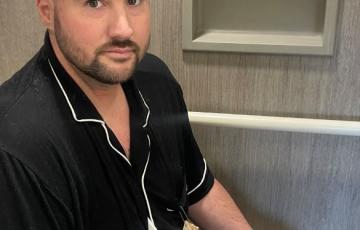
Lauren
My husband, Frank, was a 40-year-old, hard-working family man and the sole provider for me and our two children when his world was turned upside down by a routine blood test showing he had acute myeloid leukemia (AML). This was a nightmare for all. He had to be admitted to Memorial Sloan Kettering Hospital for five weeks where he received chemotherapy and ended up in the ICU with sepsis, heart failure, and organ damage. We were not sure if he was ever going to get out of there, but he became strong enough for his bone marrow transplant and had that in October.
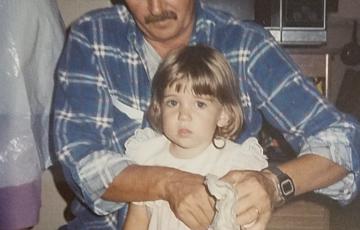
Sherri
I have donated to The Leukemia & Lymphoma Society (LLS) for many years. This year I wanted to do more in honor and loving memory of my dad, Frederick.